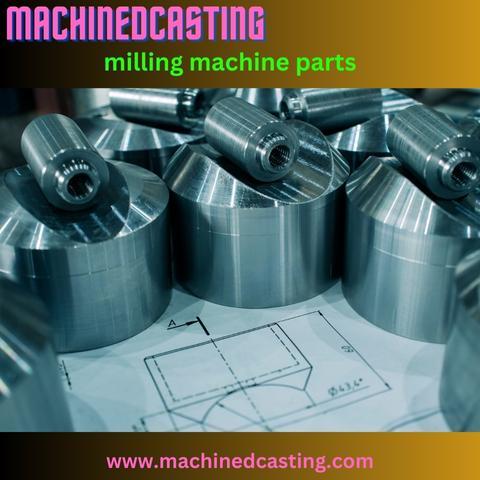Milling machine parts are versatile tools used in various industries for shaping and machining materials. Understanding the key components and their functions is crucial for both beginners and experienced operators. In this guide, we will explore the various milling machine parts and provide a detailed explanation of their roles.
- Base and Column
The base is the foundation of the milling machine, providing stability and support. It is usually made of cast iron or steel, ensuring rigidity and vibration damping. The column is attached to the base and houses the vertical and horizontal movement components.
- Table
The table is where the workpiece is secured and positioned for milling. It can move vertically, horizontally, or both, depending on the type of milling machine. The table also includes T-slots for clamping and securing workpieces.
- Knee
The knee is a vertically adjustable component located between the table and the column. It allows for precise positioning of the workpiece and the cutting tool. This feature is especially useful for milling operations requiring depth adjustments.
- Saddle
The saddle is mounted on the knee and moves horizontally. It carries the table, allowing for linear movement along the ways. This horizontal movement is essential for making various cuts and profiles.
- Spindle
The spindle is the heart of the milling machine parts, responsible for rotating the cutting tool. Milling machines come in various configurations, including vertical and horizontal spindles, each serving specific purposes. The spindle's speed can be adjusted to accommodate different materials and cutting requirements.
- Quill
In vertical milling machines, the quill is a component that can move up and down within the spindle housing. It is used for drilling operations and facilitates precise depth control.
- Arbor
The arbor is a tool holder that attaches to the spindle. It accommodates various cutting tools, such as end mills and slitting saws, allowing for a wide range of machining operations.
- Overarm
The overarm extends from the top of the column and supports the arbor. It provides additional stability and rigidity during milling operations.
- Feed Controls
Milling machines have controls for regulating the feed rates of the workpiece and the cutting tool. These controls are essential for achieving precise cuts and controlling the material removal process.
- Digital Readout (DRO)
Many modern milling machine parts are equipped with digital readouts to display the exact position of the workpiece and cutting tool. This feature greatly enhances accuracy and efficiency.
Conclusion
Understanding the various milling machine parts is essential for efficient and precise machining. Whether you are a novice or an experienced operator, this comprehensive guide provides valuable insights into the parts and functions that make milling machines such versatile and powerful tools in the world of manufacturing and machining.


